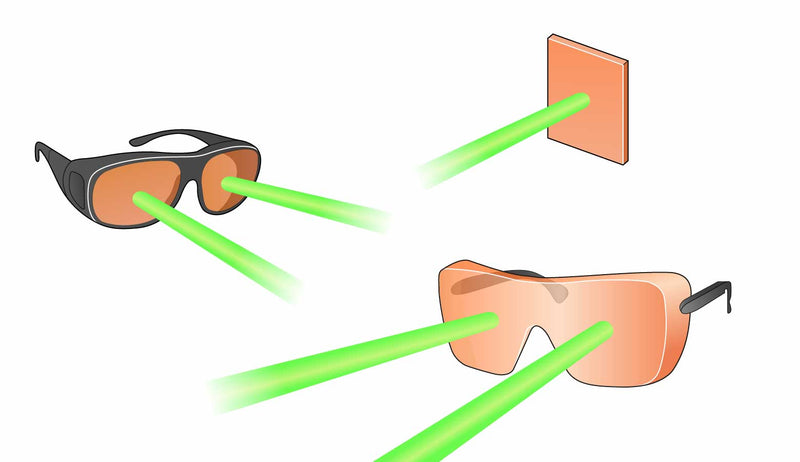Recommended Suggestions For Choosing Safe Laser Therapy
Wiki Article
How Do Safe Laser Low-Level Laser Therapy (Lllt) That Is A Low-Level, Safe Laser, Aid In Healing Ulcerative Wounds?
Safe Laser Low Level Laser Therapy (LLLT) is used to treat ulcerative wounds in several ways. It stimulates the fibroblast, collagen, and angiogenesis processes (formation of blood vessels) which are all important for wound healing. It may speed up closing of wounds.
LLLT can decrease inflammation by preventing the release of pro-inflammatory cells. It also aids in the production of anti-inflammatory mediators. LLLT may be used to lessen inflammation in ulcerative sores. This may aid in healing by reducing the amount of tissue damage.
LLLT is effective in reducing discomfort, particularly in the case of ulcerative wounds. LLLT helps reduce pain and discomfort and can improve the patient's satisfaction.
Increased Blood circulation LLLT stimulates microcirculation and vasodilation. The result is an increase in blood flow towards the wound. The improved blood circulation supplies nutrients and oxygen to the tissues, promoting healing and aiding in the elimination of waste products and toxins from the wound area.
LLLT is antimicrobial that reduce the possibility of infections on ulcerative sores. LLLT reduces the chance of infection, and also speeds up healing by encouraging bacterial elimination and preventing the spread of infection to the wound.
LLLT helps reduce scars by promoting the regeneration of tissue and the process of remodeling. LLLT boosts collagen production and aligns collagen bundles, resulting in an even, better-organized scar. This can lead to improved cosmetic results.
It is safe Laser low-level laser therapy is a drug-free method of treatment that is not invasive. It can be used to treat ulcerative wounds. It helps speed up healing, less pain and more favorable overall wound outcomes. It's best to consult an expert in healthcare for appropriate treatment and care of ulcerative wounds prior to utilizing LLLT. Check out the recommended safe laser bérlés for blog examples including orvosi lágylézer, lezer kezeles, laser hu, lézeres fájdalomcsillapítás, mozgásszervi problémák, safe laser készülék, orr lézer készülék, lágylézer készülék bérlés, lágylézer készülék, lagy lezer and more.

What Are The Benefits Of Safe Laser For Ear, Nose, Throat And Sinus Problems?
LLLT (low-level laser therapy) is a multi-faceted therapy that can help treat disorders of the ENT. This is beneficial for sinusitis and rhinitis.
Pain Relief LLLT is effective in reducing the discomfort associated with earaches, sinus pressure, and sore throats.
Increased healing of tissues- LLLT stimulates cell growth and metabolism that leads to rapid repair and regeneration of tissues. In ENT conditions such as otitis media (middle ear infection) or pharyngitis (sore throat), LLLT can help promote faster healing of inflamed or damaged tissues.
Improved blood circulation LLLT stimulates microcirculation as well in vasodilation. The result is increased flow of blood to the area affected. The increased blood flow aids in healing by providing nutrients and oxygen to the tissues.
Antimicrobial effects- LLLT was found to have antimicrobial properties. This could help in reducing viral and bacterial burdens in the nasal passages. This could be helpful for treating infections such as tonsillitis or sinusitis.
Treatment of Allergy Symptoms LLLT helps reduce symptoms associated with allergic rhinitis allergy symptoms like hay fever, and more by reducing inflammation in nasal passages and your sinuses. This can result in reduced nasal congestion, sneezing and itching.
Treatment of Tinnitus- LLLT has been studied as a potential treatment for tinnitus, an ailment that is characterized by buzzing or ringing in the ear. LLLT is thought to enhance blood circulation and decrease inflammation in the auditory system and lead to a reduction of tinnitus.
Safe Laser's low-level treatment is non-invasive, drug-free, and provides fast healing. Before making use of LLLT you should consult a specialist ENT to determine the cause and treatment recommendations. Check out the top safe laser 150 for website examples including lágylézer készülék, lágy lézer kezelés, gyógyító lézer, lágy lézer vélemények, lágylézeres készülék, laser hu, lágylézer bérlés, lágylézeres készülék, gyógyító lézer, lágylézer készülék bérlés and more.

What Is The Average Time It Will Take For A Laser Affect Chronic Conditions?
Depending on the prescribed treatment protocol, the number of LLLT sessions and frequency could differ. Based on the treatment regimen by a health expert, the number and frequency LLLT sessions needed to get the best results could vary. For chronic conditions, it is possible to require a number of LLLT treatment sessions for a longer period of time to achieve significant improvements in symptoms.
The frequency and quantity of LLLT treatment sessions for chronic conditions can differ from person to person, and could be contingent on factors such as:
The degree of chronic illness can influence the number of LLLT treatments needed. Individuals who have more severe symptoms, or are at an advanced phase of the condition might require more sessions.
Individual Response to Treatment Certain individuals may be more responsive to LLLT. Genetics, health and healing capacity are all aspects that affect the speed at which a patient experiences benefits and how well they respond to LLLT.
Treatment Protocol - The suggested treatment regimen of a health practitioner will also have a major impact on the frequency and duration of LLLT sessions. The treatment plan is tailored to the individual, and could include scheduling LLLT at least once a week or at specific intervals for a longer time period.
Maintenance Therapy- In the case of chronic illnesses, ongoing maintenance therapy is often required to maintain the results achieved with LLLT. It could be necessary to attend periodic LLLT sessions with the aim of managing symptoms and preventing flare-ups.
LLLT can be beneficial for certain chronic illnesses. However, others may require a more prolonged course of treatment to see the desired results. To maximize the benefits from LLLT therapy, it's important to follow the prescribed treatment plan and keep track of all scheduled sessions. To track progress and make adjustments to the treatment plan, it's crucial to keep in touch with a health care provider frequently.